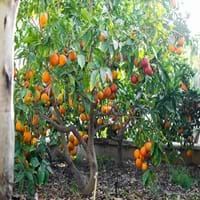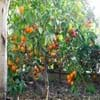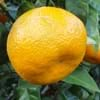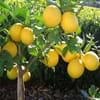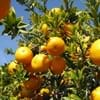Life Span
Perennial
Annual
Origin
Southeastern Asia, China
South Africa
Types
Tarocco, Sanguinello,
Moro
Shasta Daisy
Gloriosa Daisies
Painted Daisy
Pyrethrum Daisies
Number of Varieties
Not Available
Habitat
Sunny Edge, Woodland Garden
gardens, Grassland
USDA Hardiness Zone
9-11
10-11
Sunset Zone
H1, H2, 8, 9, 12, 13, 14, 15, 16, 17, 18, 19, 20, 21, 22, 23, 24
8, 9, 12, 13, 14, 15, 16, 17, 18, 19, 20, 21, 22, 23, 24
Habit
Oval or Rounded
Clump-Forming
Flower Color
White
White, Yellow, Blue, Purple, Orange, Pink, Magenta
Flower Color Modifier
Bicolor
Bicolor
Fruit Color
Orange, Orange Red
Not Available
Leaf Color in Spring
Dark Green
Green, Blue Green
Leaf Color in Summer
Dark Green
Green, Blue Green
Leaf Color in Fall
Dark Green
Green, Blue Green
Leaf Color in Winter
Light Green
Light Green
Leaf Shape
Ovate
Arrowhead
Plant Season
Spring, Summer, Fall, Winter
Spring, Summer, Fall
Sunlight
Full Sun
Full Sun
The pH of Soil
Acidic, Neutral
Neutral
Soil Drainage
Well drained
Well drained
Bloom Time
Spring, Late Winter, Indeterminate
Late Spring, Early Summer, Summer, Late Summer, Early Fall, Fall
Tolerances
Drought
Drought
Where to Plant?
Ground
Ground, Pot
How to Plant?
Seedlings, Semi-ripe cuttings
Seedlings, Stem Planting
Plant Maintenance
Medium
Medium
Watering Requirements
Do Not over Water, Keep the ground moist but not water-logged, Needs watering once a week
Allow soil to be completely dry in between waterings, It cannot sustain wet-feet, Keep the ground moist but not water-logged, Water in morning to avoid prompting diseases, Water twice a day in the initial period
In Summer
Lots of watering
Lots of watering
In Spring
Moderate
Moderate
In Winter
Average Water
Average Water
Soil pH
Acidic, Neutral
Neutral
Soil Drainage Capacity
Well drained
Well drained
Sun Exposure
Full Sun
Full Sun
Pruning
Pinch Tips, Remove branches, Remove damaged fruit, Remove damaged leaves, Remove dead branches, Remove dead leaves
Cut or pinch the stems, Prune regularly, Remove deadheads
Fertilizers
All-Purpose Liquid Fertilizer, organic fertlizers
All-Purpose Liquid Fertilizer
Pests and Diseases
Red blotch
Red blotch
Plant Tolerance
Drought
Drought
Flower Petal Number
Single
Single
Foliage Texture
Medium
Medium
Foliage Sheen
Glossy
Not Available
Attracts
Birds, Butterflies
Bees, Butterflies
Allergy
Pollen
Not Available
Aesthetic Uses
Not Used For Aesthetic Purpose
Beautification, Bouquets, Showy Purposes
Beauty Benefits
Good for skin
Not Available
Environmental Uses
Air purification, Indoor Air Purification
Air purification
Medicinal Uses
Appetizer, Blood purifier, Carminative, Miscellany, Tonic
Cold, Cough, Stomach pain
Part of Plant Used
Flowers, Fruits
Flowers
Other Uses
Used as essential oil
Showy Purposes, Used as Ornamental plant
Used As Indoor Plant
Yes
Yes
Used As Outdoor Plant
Yes
Yes
Garden Design
Container, Edible, Feature Plant, Fruit / Fruit Tree, Hedges, Mixed Border, Screening / Wind Break, Topiary / Bonsai / Espalier, Tropical
Bedding Plant, Container, Cutflower, Foundation, Groundcover, Hanging Basket, Mixed Border, Rock Garden, Wall
Botanical Name
CITRUS sinensis
OSTEOSPERMUM
Common Name
Blood Orange, Naval Orange, Orange, Sweet Orange
African daisy or Blue-eyed Daisy
In Hindi
Blood Orange Tree
अफ्रीकी डेज़ी
In German
Blut- Orange Tree
African Daisy
In French
Sang Orange Tree
marguerite africaine
In Spanish
Árbol de la naranja de sangre
margarita africana
In Greek
Blood Orange Tree
Αφρικανική μαργαρίτα
In Portuguese
Orange Tree sangue
africano margarida
In Polish
Krew Orange Tree
Gerbery
In Latin
Sanguinem Aliquam ligno
African primula
Phylum
Magnoliophyta
Anthophyta
Class
Magnoliopsida
Magnoliopsida
Order
Sapindales
Asterales
Family
Rutaceae
Asteraceae
Genus
Citrus
Osteospermum
Clade
Angiosperms, Eudicots, Rosids
Angiosperms, Asterids, Eudicots
Tribe
Citreae
Calenduleae
Subfamily
Aurantioideae
Asteroideae
Number of Species
Not Available
Not Available
Season and Care of Blood Orange and African Daisy
Season and care of Blood Orange and African Daisy is important to know. While considering everything about Blood Orange and African Daisy Care, growing season is an essential factor. Blood Orange season is Spring, Summer, Fall and Winter and African Daisy season is Spring, Summer, Fall and Winter. The type of soil for Blood Orange is Loam and for African Daisy is Loam while the PH of soil for Blood Orange is Acidic, Neutral and for African Daisy is Neutral.
Blood Orange and African Daisy Physical Information
Blood Orange and African Daisy physical information is very important for comparison. Blood Orange height is 457.20 cm and width 365.76 cm whereas African Daisy height is 15.20 cm and width 45.70 cm. The color specification of Blood Orange and African Daisy are as follows:
Blood Orange flower color: White
Blood Orange leaf color: Dark Green
African Daisy flower color: White, Yellow, Blue, Purple, Orange, Pink and Magenta
- African Daisy leaf color: Green and Blue Green
Care of Blood Orange and African Daisy
Care of Blood Orange and African Daisy include pruning, fertilizers, watering etc. Blood Orange pruning is done Pinch Tips, Remove branches, Remove damaged fruit, Remove damaged leaves, Remove dead branches and Remove dead leaves and African Daisy pruning is done Cut or pinch the stems, Prune regularly and Remove deadheads. In summer Blood Orange needs Lots of watering and in winter, it needs Average Water. Whereas, in summer African Daisy needs Lots of watering and in winter, it needs Average Water.
